|

|
|
| |
|
China Oil Painting Direct
|
|
100% hand painted, 100%
cotton canvas,
100% money back if not satisfaction.
|
|
|
|
ART WORKS
INDEX
A B C D E F G H I J K L M N O P Q R S T U V W X Y Z
|
|
ARTISTS
INDEX
A B C D E F G H I J K L M N O P Q R S T U V W X Y Z
|
|
|
|
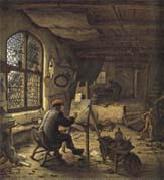 |
Adriaen van ostade 
|
|
Dutch Baroque Era Painter, 1610-1685
Painter, draughtsman and etcher. According to Houbraken's rather unreliable biography, he was a pupil concurrently with Adriaen Brouwer of Frans Hals in Haarlem. Hals influenced him very little, whereas Brouwer, who was described as 'known far and wide' as early as 1627, had a decisive influence on the evolution of Adriaen van Ostade's always idiosyncratic portrayal of peasant life. The first documentary mention of Adriaen van Ostade as a painter is in 1632 (Schnackenburg, 1970). Most of his paintings are signed and dated, the earliest firmly dated example being the Peasants Playing Cards
|
|
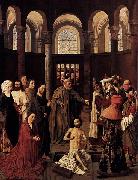 |
Albert van Ouwater 
|
|
Albert van Ouwater (c. 1410/1415-1475) was one of the earliest artists of Early Netherlandish painting working in the Northern Netherlands, as opposed to Flanders in the South of the region.
[edit] BiographyHe was probably born in Oudewater, and is mentioned by Karel van Mander (1604) as a reputable painter at the time in which he lived.[1] According to Karel van Mander he was possibly a contemporary of Jan van Eyck and had been the teacher of Geertgen tot Sint Jans, though he was quick to qualify this statement with the eye-witness account of an old man named Albert Simonsz who had been a pupil of Jan Mostaert and claimed neither he nor Mostaert had ever even heard of this Albert van Ouwater or Geertgen tot Sint Jans.[1] Van Mander highly commends an altarpiece by Van Ouwater in the principal church in Haarlem, the Grotekerk or Sint-Bavokerk, representing St. Peter and St. Paul, in which the figures are carefully and correctly designed, and richly coloured.[1] Van Mander posits Van Ouwater as the founder of the Haarlem school of painting, making him the first major Dutch (as opposed to Flemish) artist. According to Van Mander, landscape painting was a particular specialty of this Dutch school, although none of Van Ouwater's surviving works exhibit this tendency. Van Ouwater seems to have been a contemporary of Dirk Bouts in mid-15th-century Haarlem, and Geertgen tot Sint Jans may have been his pupil.
|
|
 |
Albertus Del Orient Browere 
|
|
American, 1814-1887
|
|
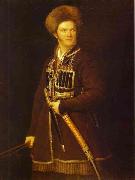 |
Aleksander Orlowski 
|
|
(March 9, 1777 - March 13, 1832) was a Polish painter and sketch maker, pioneer of lithography in the Russian Empire.
Orłowski was born in 1777 in Warsaw to a tavern-keeper. In his early childhood he became known as a prodigy and soon Izabela Czartoryska financed his first classes of painting with the notable artist Jan Piotr Norblin. In 1793 Orłowski joined the Polish Army and fought in the Kościuszko Uprising against Imperial Russia and Prussia, but was wounded and returned to Warsaw for further studies, financed by Prince Jezef Poniatowski. He studied with many notable painters of the epoch, among them Norblin, Marcello Bacciarelli and Wincenty Lesserowicz. In 1802, after the Partitions of Poland, he moved to Russia, where he became one of the pioneers of lithography.
Among his works are countless sketches of everyday life in Poland and Russia, as well as scenes of the Kościuszko Uprising and other Polish wars.
|
|
 |
Aleksander Orlowski 
|
|
Aleksander Orłowski
Aleksander Orłowski (March 9, 1777 - March 13, 1832) was a Polish painter and sketch maker, pioneer of lithography in the Russian Empire.
Orłowski was born in 1777 in Warsaw to a tavern-keeper. In his early childhood he became known as a prodigy and soon Izabela Czartoryska financed his first classes of painting with the notable artist Jan Piotr Norblin. In 1793 Orłowski joined the Polish Army and fought in the Kościuszko Uprising against Imperial Russia and Prussia, but was wounded and returned to Warsaw for further studies, financed by Prince Jezef Poniatowski. He studied with many notable painters of the epoch, among them Norblin, Marcello Bacciarelli and Wincenty Lesserowicz. In 1802, after the Partitions of Poland, he moved to Russia, where he became one of the pioneers of lithography.
Among his works are countless sketches of everyday life in Poland and Russia, as well as scenes of the Kościuszko Uprising and other Polish wars.
|
|
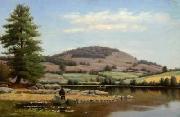 |
Alfred Ordway 
|
|
(1821 - 1897) was an American landscape and portrait painter, and one of the founding fathers of the Boston Art Club.
Alfred was born in Roxbury, Massachusetts to mother Currier, and father Thomas Ordway on March 9, 1821. With his father being the cities' clerk, Alfred spent the majority of his childhood in Lowell, Massachusetts. His family can be traced back to the early 17th century when James Ordway settled in Dover, New Hampshire. Both his parents fought in the Revolutionary War, and his grandfather, Nehemiah Ordway, a physician in Amesbury, Massachusetts, was put in charge "to form and equip a company for Bunker Hill".
|
|
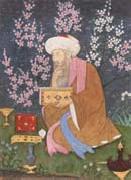 |
Ali of Golconda 
|
|
the period of 1465-1535
|
|
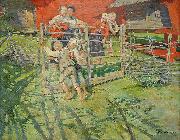 |
Allan osterlind 
|
|
painted Lekande barn - sommar pa fabodvallen in 1890
|
|
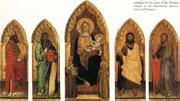 |
Andrea di Orcagna 
|
|
Italian Byzantine Style Painter, ca.1320-1368
|
|
 |
Archduke Rudolf of Austria 
|
|
Rudolf Johannes Joseph Rainier von Habsburg-Lothringen, Archduke and Prince Imperial of Austria, Prince Royal of Hungary and Bohemia (8 January 1788 - 24 July 1831) was a Cardinal, an Archbishop of Olomouc, and a member of the House of Habsburg-Lorraine.
Born in Pisa, Italy, he was the youngest son of Emperor Leopold II and Maria Louisa of Spain. He was elected archbishop of Olomouc in 1819 and became cardinal in the year 1820.
In 1803 or 1804, Rudolf began taking lessons in piano and composition from Ludwig van Beethoven. The two became friends, and Rudolph became a supporter and patron of Beethoven; their meetings continued until 1824. Beethoven dedicated 14 compositions to Rudolph, including the Archduke Trio, the Hammerklavier Sonata, the Emperor Concerto and the Missa Solemnis. Rudolph, in turn, dedicated one of his own compositions to Beethoven. The letters Beethoven wrote to Rudolph are today kept at the Gesellschaft der Musikfreunde in Vienna.
On 24 March 1819 he was appointed, at the age of 31, Archbishop of Olomouc in the present day Czech Republic but then part of the Austrian Empire. He was made Cardinal-Priest of the titular church of S. Pietro in Montorio by Pope Pius VII on 4 June 1819. He was ordained a priest on 29 August 1819, and consecrated a bishop on 26 September.
In 1823 - 24, he was one of the 50 composers who composed a variation on a waltz by Anton Diabelli for Vaterländischer Kenstlerverein. In Rudolf's case, the music was published anonymously, as by "S.R.D" (standing for Serenissimus Rudolfus Dux).
|
|
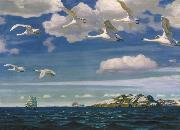 |
Arkady Alexandrovich Rylov 
|
|
Arkady Alexandrovich Rylov (Russian, 29 January [O.S. 17 January] 1870 - June 22, 1939) was a Russian and Soviet Symbolist painter.
Biography
Rylov was born in the village Istobenskoye, Vyatka gubernia. He was brought in the family of his stepfather, a notary (Rylov's father had a psychiatric illness). He moved to Saint Petersburg and studied at the Technical Design School of Baron Schtiglitz (1888-1891), then at the Imperial Academy of Arts under Arkhip Kuindzhi (1894-1897).
In the Blue Expanse, 1918Rylov was a member of the Mir iskusstva movement and its spin-off Union of Russian Artists also a member of the Association of Artists of the Revolutionary Russia. He was a chairman of the Kuindzhi Society.
|
|
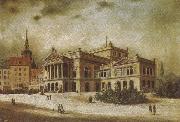 |
arthur o shaughnessy 
|
|
1844 C 81, English poet and naturalist. He was a member of the zoological department of the British Museum. He wrote four volumes of poetrye Epic of Women (1870), Lays of France (1872), Music and Moonlight (1874), and Songs of a Worker (1881)??which all reveal the influence of D. G. Rossetti. One ode, beginning, We are the music-makers, is his best-known poem.
|
|
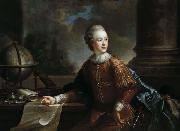 |
August Friedrich Oelenhainz 
|
|
(June 28, 1745 - November 5, 1804) was a German painter.
|
|
 |
augustus osborne lamplough,r.w.s 
|
|
1877-1930
|
|
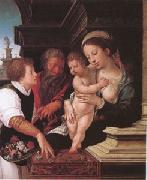 |
Barend van Orley 
|
|
Brussels ca 1488-1541
|
|
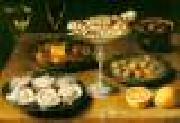 |
BEERT, Osias 
|
|
Flemish Baroque Era Painter, ca.1580-1624
Flemish painter. In 1596 he went to study with Andries van Baseroo and in 1602 became a master in the Antwerp Guild of St Luke; these two dates suggest his probable date of birth. Beert married Marguerite Ykens on 8 January 1606. Contemporary documents describe him as a cork merchant. The esteem enjoyed by Beert is indicated by the large number of pupils he had, including, in 1610, Frans van der Borch; in 1615, Frans Ykens; in 1616, Paulus Pontius; and, in 1618, Jan Willemssen. Beert's son, Osias Beert the younger (1622-78), was also a painter and became a master in 1645.
|
|
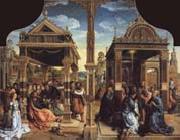 |
Bernaert Van Orley 
|
|
Flemish Northern Renaissance Painter, ca.1488-1541, Painter and tapestry designer, son of Valentin van Orley. He was one of the greatest proponents of ROMANISM, a northern style based on the ideals of the Italian Renaissance. It must have been in Brussels, however, that he saw the Italian works of art that influenced him so profoundly, for it seems unlikely that he ever travelled to Italy. Brussels was then world-renowned as the centre for tapestry manufacture but was suffering from the ecliptic rise of Antwerp as the pre-eminent painting centre. The artist made the best of both situations, establishing himself as a leading designer for the Brussels tapestry industry and as a master in the Antwerp Guild of St Luke by 1517.
|
|
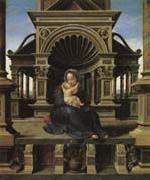 |
Bernard van orley 
|
|
Flemish Northern Renaissance Painter , c.1488-1551
|
|
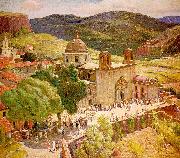 |
Berninghaus, Oscar Edmund 
|
|
American Painter, 1874-1952
|
|
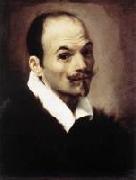 |
BORGIANNI, Orazio 
|
|
Italian Baroque Era Painter, 1578-1616
Orazio Borgianni (c. 1575 - buried 15 January 1616) was an Italian painter and etcher of the Mannerist and early-baroque periods. He was the stepbrother of the sculptor and architect Giulio Lasso.
Borgianni was born in Rome, where he was documented in February 1604. He was instructed in the art of painting by his brother, Giulio Borgiani, called Scalzo. The patronage by Philip II of Spain induced him to visit that Spain, where he signed an inventory in January 1605. He returned to Rome from Spain after April 1605 at the height of his career, and most of the work of his maturity was carried out 1605-16. In Spain, he signed a petition to begin an Italianate academy of painting and executed a series of nine paintings for the Convento de Portacoeli, Valladolid, where they remain. From his time in Spain, there remain two of his paintings in the Prado Museum: St Christopher and the Stigmatization of St Francis.
On his return to Rome he was patronized by the Spanish ambassador, for whom he painted several pictures, and he was also employed in painting for the churches. He painted as late as 1630. after which he returned to Spain. He frescoed in the apse of the church of San Silvestro in Capite in Rome, a Martyrdom of S.Stefano I and a Messengers of Constantine call on Saint Silvestro (1610). His canvas of San Carlo Borromeo in the church of San Carlo alle Quattro Fontane (1612) is an eclectic and emotive synthesis of both Carracci and tenebrist styles. The influence of Caravaggio is also evident in a painting of the same saint (1616) now in the Hermitage Museum. A lively self-portrait of an earnest, somewhat foppish Borgianni is in the Rome Galleria Nazionale d'Arte Antica.
|
|
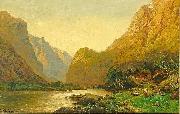 |
Carl jun. Oesterley 
|
|
(January 23, 1839 - December 16, 1930) was a German landscape painter who was a native of Göttingen. He was the son of painter Carl Friedrich Wilhelm Oesterley (1805-1891).
He attended classes at the Polytechnikum in Hannover and, beginning 1857, at the Kunstakademie (Art Academy) in Dusseldorf where he studied religious painting under Ernst Deger. During a visit to Lebeck in 1865, where he copied Hans Memling's Passion, he made some attempts at architectural and landscape painting. These turned out so well that from then on he dedicated himself to landscape painting. Beginning in 1870 he focused his artistic efforts mainly on Norwegian landscapes, for which he devoted several study trips. He lived in Hamburg and received a first-class medal from the Menchener Ausstellung.
|
|
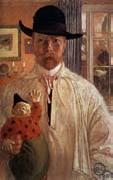 |
Carl Olaf Larsson 
|
|
1853-1919
|
|
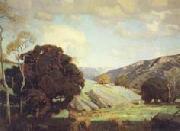 |
Carl Oscar Borg 
|
|
Swedish-born American Sculptor, 1879-1947
was a Swedish painter who emigrated to the United States around 1900. Borg was influenced by the nature of Arizona and New Mexico, and his works were widespread in American galleries. Borg was a founding member of the Painter's Club of Los Angeles and the California Art Club.
|
|
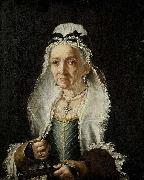 |
Circle of Fra Galgario 
|
|
painted Portrait of an Old Lady in 1720 - 1750
|
|
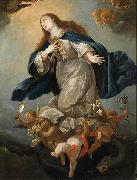 |
Circle of Mateo Cerezo the Younger 
|
|
painted Immaculate Virgin, formerly in the Chapel of Palacio de Penaranda, Spain in 17th century
|
|
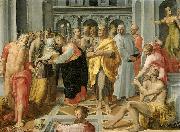 |
Circle of Pellegrino Tibaldi 
|
|
painted The Meeting of Mary and Elizabeth in the Presence of St. Jerome, St. Joseph and Others in 1550 - 1600
|
|
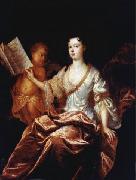 |
Circle of Pierre Gobert 
|
|
1662-1744
|
|
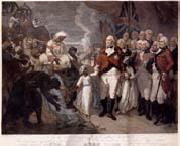 |
Daniel Orme 
|
|
British, 1766-1832
|
|
 |
David Octavius Hill 
|
|
Scottish Painter and Photographer,
1802-1870
was a founding member of the Royal Scottish Academy and its secretary for 40 years. In 1843 he enlisted the help of Robert Adamson (b. 1821, Berunside, Scot. January 1848, St. Andrews), a chemist experienced in photography, in photographing the delegates to the founding convention of the Free Church of Scotland. They used the calotype process, by which an image was developed from a paper negative. In these and other portraits they demonstrated a masterly sense of form and composition and a dramatic use of light and shade. Their five-year partnership resulted in some 3,000 photographs, including many views of Edinburgh and small fishing villages.
|
|
 |
Emil Orlik 
|
|
(July 21, 1870 - September 28, 1932) was born in Prague, which was at that time part of the Austro-Hungarian Empire, and lived and worked in Prague, Austria and Germany. He was a painter, an etcher and lithographer.
In 1905 Emil Orlik moved to Berlin and took a post at the "School for Graphic and Book Art" of the Museum of Decorative Arts (Kunstgewerbemuseum), now part of the Berlin State Museums.
|
|
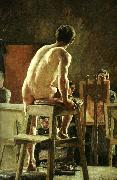 |
emil osterman 
|
|
male model and pupils. ca. 1892
royal academy of fine arts
|
|
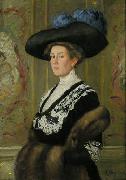 |
Ernst Oppler 
|
|
1867, Hannover - 1929, Berlin, a Jewish German painter and etcher; elder brother of Alexander.
|
|
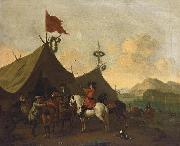 |
Evert Oudendijck 
|
|
(1650, Haarlem - 1695, Haarlem), was a Dutch Golden Age painter.
According to Houbraken he painted stag hunts and other hunting scenes in landscapes, along with the artist "Drossaart". He was the father of Adriaen Oudendijck.
According to the RKD he was registered in the Haarlem Guild of St. Luke in 1663 as the pupil of Adriaen van Ostade which would make him about 15 years old at that time.His registration as a member of the guild in 1646 is therefore impossible.
Though Evert Oudendijk is listed in the Haarlem guild register as a member in 1646, he probably became a member in 1664 (a year suspiciously lacking member registrations), like other members mistakenly registered in 1646, such as Evert Collier and Egbert van Heemskerck. He is listed two other times in the Haarlem guild; in 1663 (listed as Ostade's pupil "Evert Adriaanszen van Oudendijck") and as painter in 1670.
|
|
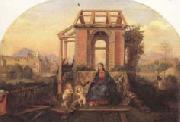 |
Ferdinand Olivier 
|
|
German Painter, 1785-1841
Painter, draughtsman and lithographer, brother of Heinrich Olivier. The brothers' mother was a court opera singer in Dessau, and Ferdinand's later interest in the German medieval and Nazarene styles owed much to the intellectual climate at the Anhalt-Dessau court, where Leopold III Frederick Francis, Prince of Anhalt-Dessau, had been the first German prince to introduce the Gothic Revival style. Olivier took up drawing in 1801-2 under the tuition of Carl Wilhelm Kolbe and the engraver Johann Christian Haldenwang (1777-1831). In 1802-3 he accompanied his father to Berlin, where he studied woodcut techniques under Johann Friedrich Gottlieb Unger (1755-1804) and may have attended August Wilhelm Schlegel's lectures on belles-lettres and art. It was here, at the latest, that he discovered Herzensergiessungen eines kunstliebenden Klosterbruders (Berlin, 1797) by Wilhelm Heinrich Wackenroder and Ludwig Tieck, and the latter's Franz Sternbalds Wanderungen (Berlin, 1798), two books of vital significance for the painting of the Romantic era. Having decided to make art their career, Ferdinand and his brother Heinrich spent two years (1804-6) in Dresden, where they copied the works of Ruisdael and Claude Lorrain in the art gallery during the summer months. Ferdinand also took lessons from Jacob Wilhelm Mechau (1745-1808) and Carl Ludwig Kaaz, both painters of idealized landscapes, and he was probably introduced to the work of Philipp Otto Runge and Caspar David Friedrich by Friedrich August von Klinkowström (1778-1835), a friend of Runge. In June 1807 Ferdinand's excellent knowledge of French led to his appointment as embassy secretary in Paris, where Heinrich soon joined him. However, after just a few weeks he gave up his diplomatic career in order to devote himself to a study of the Musee Napoleon, which at that time housed art treasures pillaged from all parts of Europe. Ferdinand and Heinrich jointly produced three paintings for Leopold III Frederick Francis of Anhalt-Dessau: a portrait of Napoleon on Horseback (c.1809; W?rlitz, Schloss), and a Last Supper and Baptism (1809-10; Werlitz, Evangel. Ch.) for the Gothic Revival church in Werlitz. Although these last two were supposed to be copies after the 'old German school', the Olivier brothers in fact used 15th- and 16th-century Dutch and Flemish models to create original compositions. At the end of 1809 they returned to Dessau.
|
|
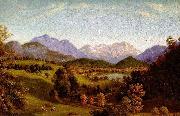 |
Ferdinand von Olivier 
|
|
painted Loisachtal in 1842-1845
|
|
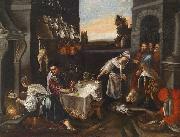 |
Follower of Jacopo da Ponte 
|
|
painted Christ in the house of Martha and Mary in 16th/17th century
|
|
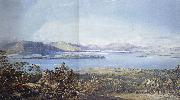 |
Francis Oliver Finch 
|
|
British watercolour painter, 1802-1862
|
|
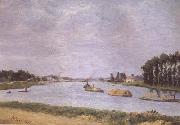 |
Francisco Oller y Cestero 
|
|
San Juan,Puerto Rico 1833-Santurce 1917
Puerto Rican painter. He studied from 1851 to 1853 at the Real Academia de Bellas Artes de San Fernando in Madrid under Federico de Madrazo y Kentz and in Paris from 1858 to 1863 under Thomas Couture and Charles Gleyre at the Ecole Imperiale et Speciale de Dessin and at the Academie Suisse. There he met Camille Pissarro, Paul Cezanne and Armand Guillaumin, who together with Couture and the work of Courbet influenced his work towards Realism and Impressionism.
|
|
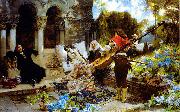 |
Francisco Pradilla Ortiz 
|
|
(July 24, 1848 - November 1, 1921) was a prolific Spanish painter famous for creating historical scenes.
He was born in Villanueva de Gellego, near Zaragoza in Aragon, and studied initially in Zaragoza and then transferred to the Real Academia de Bellas Artes de San Fernando and the Academia de Acuarelistas in Madrid. In 1873, he won a scholarship to go to Rome. From there he had opportunities to travel to France and Venice and studied the old masters. In 1878 he submitted his painting Doña Joanna of Castile or (Juana la Loca) to the National Exhibition in Spain and was awarded the Medal of Honor. The Spanish Senate then commissioned him to create La Rendicien de Granada (The Surrender of Granada) that took him three years to complete (1882). In 1881 he became the Director of the Spanish Arts Academy in Rome, but resigned from this post after two years. He traveled, mostly in Italy, portraying local themes and people. In 1897 he returned to Madrid as the director of the Museo del Prado. He held this position only briefly and then focused again on painting.
His total output is well over 1,000 paintings showing his interest in a variety of subjects and styles, often without regard of the current fashion. He is primarily recognized for his historical paintings, the last one completed in 1910 carries one of the longer titles of a major painting, Cortejo del bautizo del Prencipe Don Juan, hijo de los Reyes Catelicos, por las calles de Sevilla (Retinue of the Baptism of Don Juan, son of the Catholic Monarchs, Along the Streets of Seville). Much more common, however, are costumbristaseoften romanticized studies that show local customs or mannerseand landscapes that are often sketchy, with impressionistic influences. Financial duress after the bankruptcy of his bank may have imposed a special need to be productive.
He died in Madrid in 1921 at the age of 73.
|
|
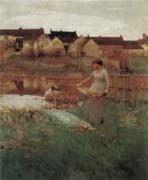 |
Frank O-Meara 
|
|
1853-1888
|
|
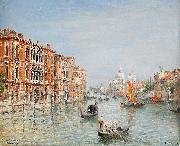 |
Frans Wilhelm Odelmark 
|
|
painted Canale Grande - Venice in 1849-1937
|
|
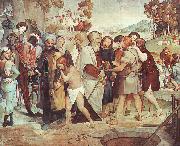 |
Friedrich Johann Overbeck 
|
|
1789-1869
German
German religious painter. Expelled from the Vienna Academy because of his opposition to its classicism, he went to Rome and with Peter von Cornelius, Veit, Schadow-Godenhaus, and others, formed the group known as the Nazarenes. His first real successes were his frescoes for the Casa Bartholdy (now in Berlin) and for the Villa Massimo. Among his notable paintings are Christ Entry into Jerusalem and Christ Agony in the Garden. Overbeck sought to make his art serve religion. His influence was due more to the purity of his doctrine than to the power of his work, which is often lacking in pictorial appeal and in color.
|
|
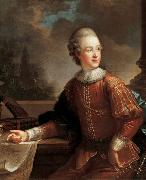 |
Friedrich olenhainz 
|
|
(June 28, 1745 - November 5, 1804) was a German painter.
|
|
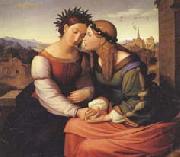 |
Friedrich overbeck 
|
|
1789-1869
German religious painter. Expelled from the Vienna Academy because of his opposition to its classicism, he went to Rome and with Peter von Cornelius, Veit, Schadow-Godenhaus, and others, formed the group known as the Nazarenes. His first real successes were his frescoes for the Casa Bartholdy (now in Berlin) and for the Villa Massimo. Among his notable paintings are Christ's Entry into Jerusalem and Christ's Agony in the Garden. Overbeck sought to make his art serve religion.
|
|
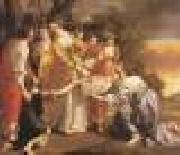 |
GENTILESCHI, Orazio 
|
|
Italian Baroque Era Painter, ca.1563-1639
Although he was eight years older than Caravaggio, he is nevertheless regarded as a Caravaggesque artist, so deeply was his mature style affected by his knowledge of the younger painter's art. His response to Caravaggio was intensely poetic, and none of Caravaggio's many gifted followers produced more beautiful pictures.
|
|
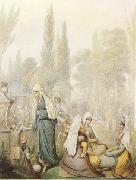 |
Georg Emanuel Opiz 
|
|
1775 - 1841
|
|
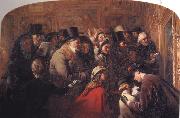 |
George Bernard O Neill 
|
|
(1828-1917). Irish genre painter
|
|
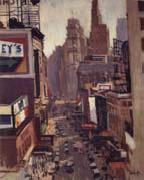 |
George Oberteuffer 
|
|
American, 1878-1940
|
|
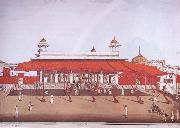 |
Ghulam Ali Khan of Delhi 
|
|
fl.1815-1852
Delhi,Dated 18
|
|
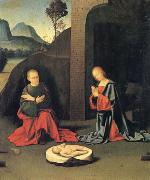 |
Giovanni Battista Ortolano 
|
|
Ferrara ca 1487-after 1524
|
|
|
|
|
|
|
|
|
| Wholesale China Oil Painting Wholesale Oil Painting China Xiamen Portrait Reproduction on canvas Chinese Oil Painting Wholesale USA Oil Painting |
|
|
|
|